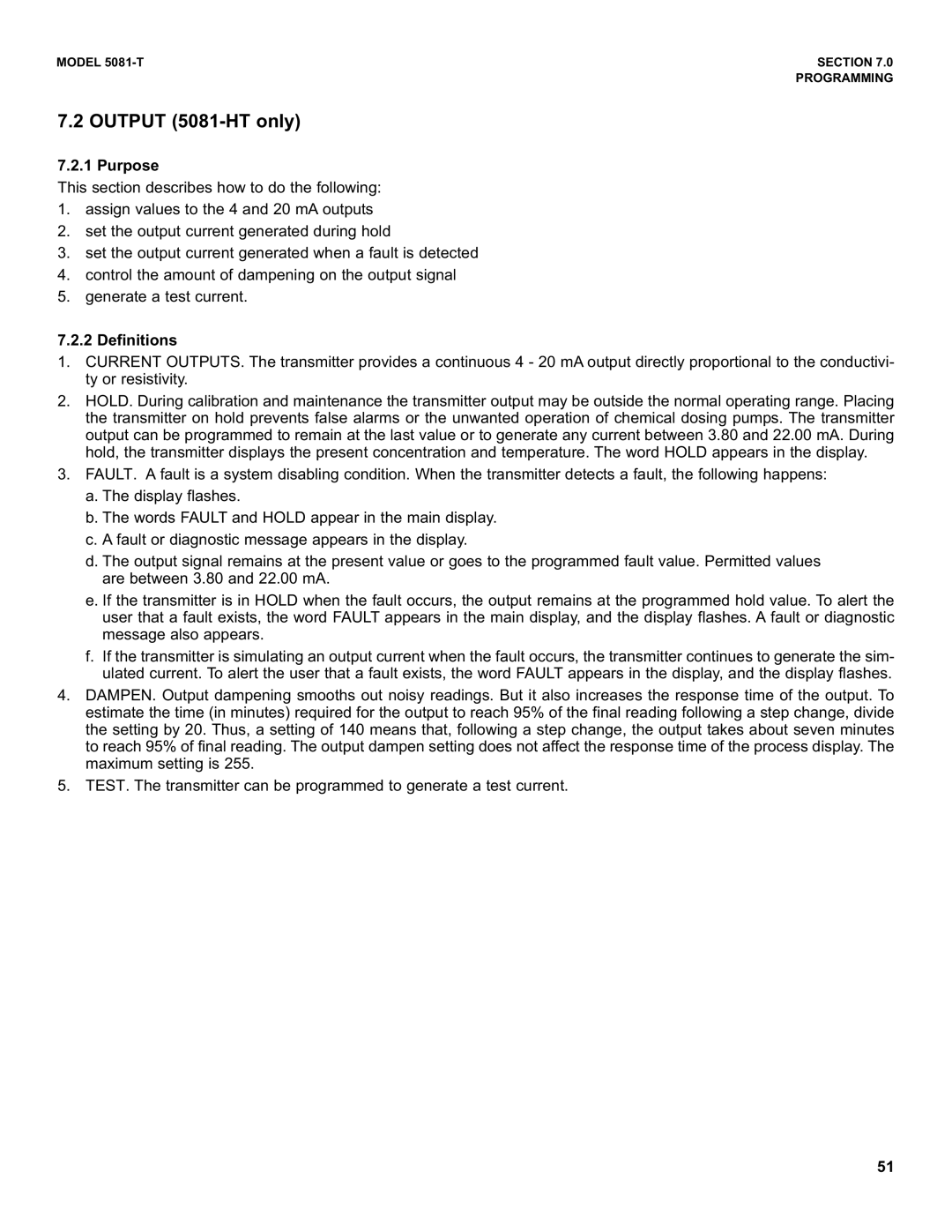MODEL | SECTION 7.0 |
| PROGRAMMING |
7.2 OUTPUT (5081-HT only)
7.2.1 Purpose
This section describes how to do the following:
1.assign values to the 4 and 20 mA outputs
2.set the output current generated during hold
3.set the output current generated when a fault is detected
4.control the amount of dampening on the output signal
5.generate a test current.
7.2.2 Definitions
1.CURRENT OUTPUTS. The transmitter provides a continuous 4 - 20 mA output directly proportional to the conductivi- ty or resistivity.
2.HOLD. During calibration and maintenance the transmitter output may be outside the normal operating range. Placing the transmitter on hold prevents false alarms or the unwanted operation of chemical dosing pumps. The transmitter output can be programmed to remain at the last value or to generate any current between 3.80 and 22.00 mA. During hold, the transmitter displays the present concentration and temperature. The word HOLD appears in the display.
3.FAULT. A fault is a system disabling condition. When the transmitter detects a fault, the following happens:
a.The display flashes.
b.The words FAULT and HOLD appear in the main display.
c.A fault or diagnostic message appears in the display.
d.The output signal remains at the present value or goes to the programmed fault value. Permitted values are between 3.80 and 22.00 mA.
e.If the transmitter is in HOLD when the fault occurs, the output remains at the programmed hold value. To alert the user that a fault exists, the word FAULT appears in the main display, and the display flashes. A fault or diagnostic message also appears.
f.If the transmitter is simulating an output current when the fault occurs, the transmitter continues to generate the sim- ulated current. To alert the user that a fault exists, the word FAULT appears in the display, and the display flashes.
4.DAMPEN. Output dampening smooths out noisy readings. But it also increases the response time of the output. To estimate the time (in minutes) required for the output to reach 95% of the final reading following a step change, divide the setting by 20. Thus, a setting of 140 means that, following a step change, the output takes about seven minutes to reach 95% of final reading. The output dampen setting does not affect the response time of the process display. The maximum setting is 255.
5.TEST. The transmitter can be programmed to generate a test current.
51
